Books of the Month: From Shy by Max Porter to Michael Frayn’s memoir
Martin Chilton reviews the biggest new books for April in our monthly column

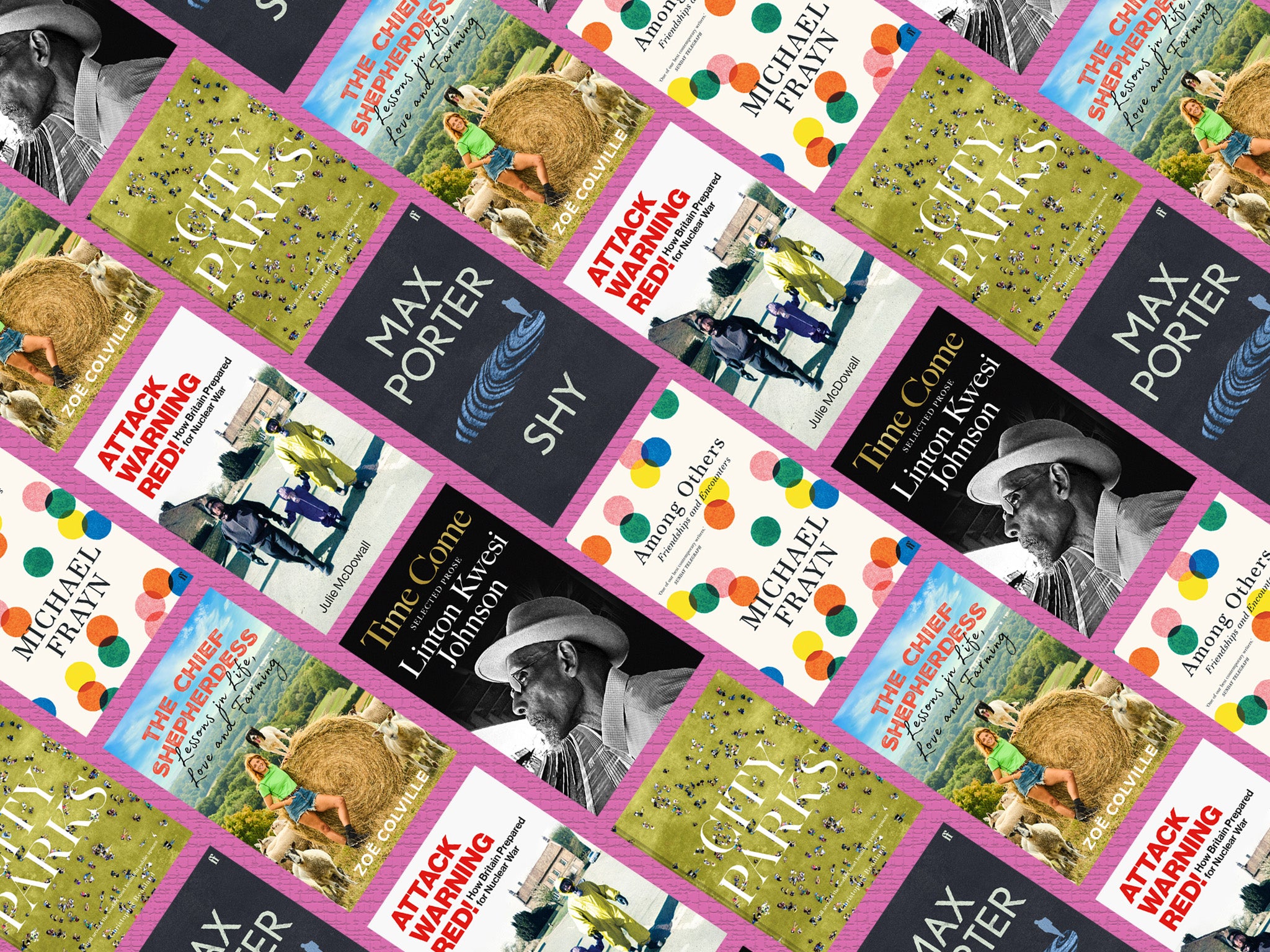
Spring awakens the flowers – and stirs the publishing industry’s arrival of more “green” books. Among the highlights of April’s fresh offerings is Keggie Carew’s Beastly: A New History of Animals and Us (Canongate), which is a positive, information-packed read about reconnecting with our wild world.
Wild is a word that came to mind reading Catrina Davies’s Once Upon A Raven’s Nest: A Life on Exmoor in an Epoch of Change (Riverrun), which is based on the recollections of a working-class Devon farmer called Thomas Hedley. It is a beguiling, earthy tale of a lost world, one rarely examined in print. Hedley’s outlandish yarns about brawling and risk-taking mix with stories that reveal his complex relationship with nature.
The farmer wasn’t a man for half-measures, though. In 1976, when a noisy owl in an ash tree was keeping him awake, he recalls: “That night I wait until the owl starts squeaking then I go out with my chainsaw and cut the tree down.” I’m not sure his brutal anecdote would fit into Tree Stories: How Trees Plant our World and Connect Our Lives by Stefano Mancuso (Profile Books, translated from the Italian by Gregory Conti), which is full of rather more captivating stories of how trees are rooted in human history.
Farming from a modern female perspective is explored by Zoë Colville in The Chief Shepherdess (reviewed in full below, along with non-fiction books from Michael Frayn and Linton Kwesi Johnson, fiction by Max Porter, a guide to Britain’s nuclear preparations by Julie McDowall and Christopher Beanland’s picture book about the joy of city parks).
A host of impressive Allen Lane books out this month examine the past. In Beyond the Wall: East Germany, 1949-1990, Katja Hoyer offers an insightful account of why East Germany is so much more than a “footnote in German history”. Christopher Clark’s Revolutionary Spring: Fighting for a New World 1848-1849 offers an engrossing dissection of a revolutionary year in European society, while Nigel Townson’s The Penguin History of Modern Spain, 1898 to the Present draws on the latest post-Franco scholarship for its radical account of Spain’s fate in modern times.
In a gripping modern history book, Rory Carroll looks at how the IRA came remarkably close to wiping out Margaret Thatcher and her cabinet in the 1984 Brighton Grand Hotel bombing. Killing Thatcher: The IRA, the Manhunt, and the Long War on the Crown (Mudlark) captures a truly dramatic moment in British politics.
Finally, two years after Frank Skinner’s A Comedian’s Prayer Book, his old Fantasy Football League comedy partner David Baddiel catches up with an offering of his own thoughts on the divine. The God Desire (TLS) is possibly a 94-page book Baddiel wanted to write more than I wanted to read, but he canters amiably enough across the subjects of life, death, Dollis Hill and why he is suspicious of “atheist machismo”.
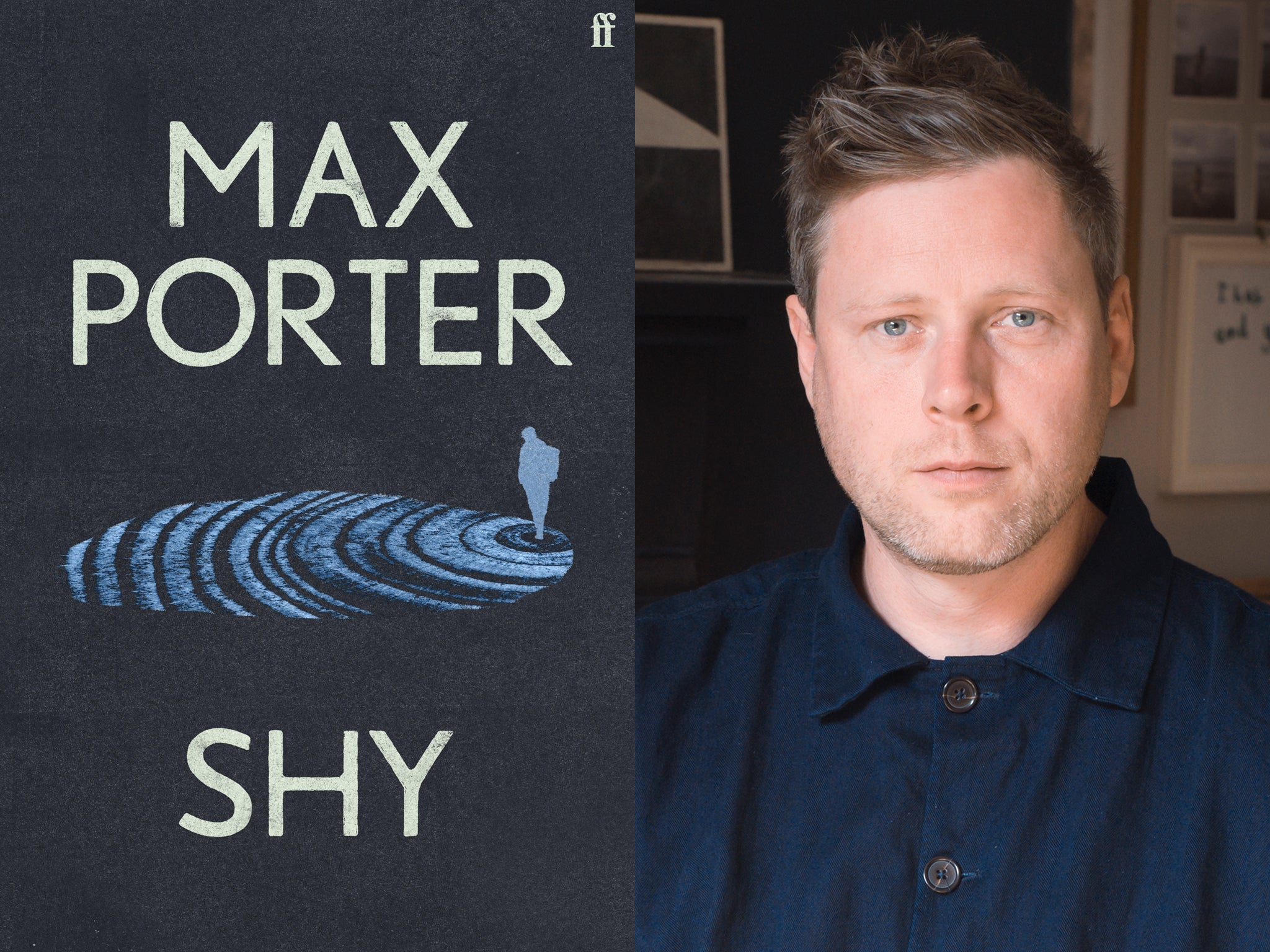
Shy by Max Porter ★★★★★
After a disastrous afternoon making out with fellow teenager called Becky, Shy, the eponymous protagonist of Max Porter’s magnificent new novel, ponders on why life is so full of stress and pressure. “It’s too much, it’s too f***ing much, the whole thing is hassle, how does anyone deal with it?” How indeed.
Porter, the author of the excellent Lanny and Grief is the Thing With Feathers, has written a small gem of a novel about mental health, lost childhood and the chaos of adolescence. The novel, set over a few quirky hours in the life of a boy in 1995 living at the Last Chance home, a “s***e old mansion converted into a school for badly behaved boys in the middle of bumblef*** nowhere”, is told in striking prose-poetry. The book captures the lyrical language of raging teenagers (“nice chat, you f***ing whiny old bint,” Shy hisses at his mother) and their capacity for cruel observation. “Jenny’s mole on her cheek like a little choc chip, Jenny’s coffee breath, Jenny’s leather sandals like a f***ing disciple of Christ,” is Shy’s painfully pointed description of a well-intentioned social worker.
Porter probes Shy’s troubled, mood-swinging, violent personality from inside his own frightened head. The writing is so good, you really feel like you are inside a head that is on fire. This self-aware boy, tormented even in his sleep by “night terrors”, is no fool: he can spot his stepfather’s “judge-eyes”; he knows why school is such a “bad mood aggravator”. He feels remorse for past behaviour. It still “nags” at him that he “acted like a twat at Nana’s funeral”. The novel is full of deft touches that show Porter’s gift of empathy. The story is heartbreaking (“I am literally begging you to treat me like a human being,” pleads Shy’s mum), although the acrid storyline is leavened by humour (my favourite was when a boy involved in an escalating confrontation with Shy suddenly starts reminiscing about the time they went to Tumble Tots together).
Although only 122 pages long, Shy is an inventive, startlingly humane novel about what it’s like to live in a long, dark tunnel. However, amid all the pain and bleakness, there is some light: not only in the final, bizarrely uplifting scene, but in the hope that time really can work some magic. You hope that for all the real Shys out there, the words of a character called Steve ring true. “2005-Shy won’t even recognise 1995 Shy,” Steve advises the boy. “2005-Shy will look back on this and agree with me. He’ll be like, I was just around the corner, Shy. Just get past this bit.”
But, as Porter shows us, “this bit” in life can sometimes be excruciating.
Shy by Max Porter is published by Faber on 6 April, £12.99

Attack Warning Red! How Britain Prepared for Nuclear War by Julie McDowall ★★★★☆
How does one get ready for the apocalypse? It’s perhaps no surprise that the British way of doing this is comic, shambolic and curiously open-hearted. You might think that the tale of how Britain prepared for the threat of nuclear annihilation is not inherently amusing, but there are plenty of bizarre, grisly entertaining nuclear nuggets in Julie McDowall’s fascinating slice of social history.
The atomic bombs dropped on Hiroshima and Nagasaki in 1945 changed the history of humankind, and in Attack Warning Red! How Britain Prepared for Nuclear War, McDowall outlines the surreal nature of the new world order forged by America’s attack on Japan. Nuclear testing became a weird fact of life. In one bizarre testing experiment in Nevada, the US army dressed 719 pigs in little khaki uniforms before obliterating them (pig skin was chosen for its similarities to human flesh), presumably reaching the inevitable conclusion there is no cure for bacon cooked at that intense heat.
The sections on Britain’s makeshift plans are grimly compelling, and you marvel at the dumb idea that collapsible coffins would be a good way of disposing of corpses. The amateur first-aid vibe of a lot of official advice simply reveals the futility of the pretence from above that survival was a realistic option after global nuclear destruction.
We also learn that Durham Prison was chosen as a place to house government staff (presumably Dominic Cummings could find his way there in a blackout), and McDowall also reports a plan to maintain law and order in the small villages of Surrey was drawn up in the 1980s, with carefully selected street-watchers in place to report “cases of lawlessness”. Is it just me who winces at the thought of the type of Home Counties man who would revel in being a post-Armageddon Neighbourhood Watch warden?
In truth, there is a Dad’s Army comedy feel to the whole surreal story, even though it’s hard not to shudder at the thought that the nuclear threat is still very much present with some of our mad 21st-century rulers. But don’t worry too much: you won’t hear the Tannoys warning sounds anyway. In Britain, as McDowall reports, we “stripped most of our sirens and sold them for scrap”.
Attack Warning Red! How Britain Prepared for Nuclear War by Julie McDowall is published by The Bodley Head on 6 April, £22
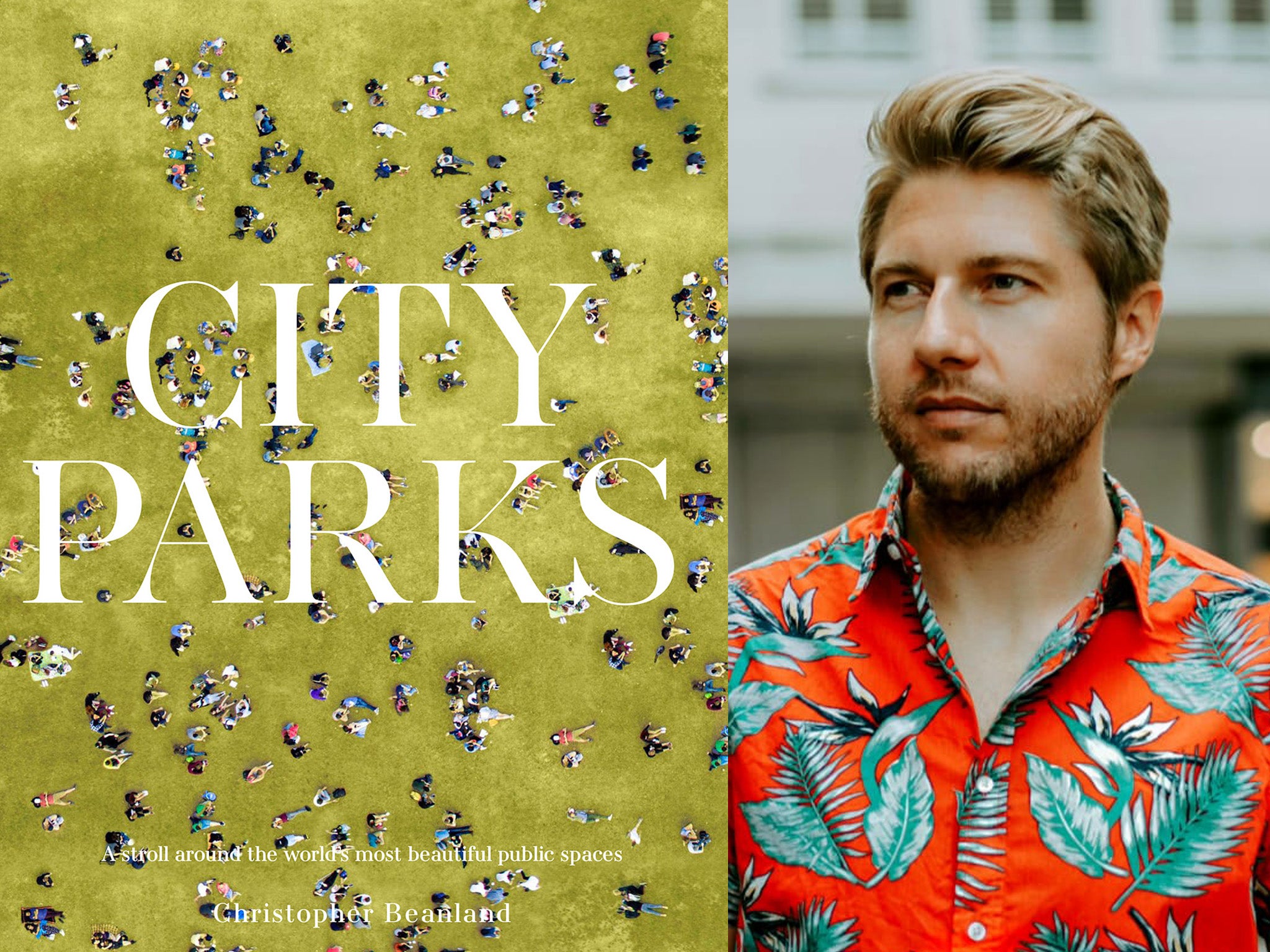
City Parks: A Stroll Around the world’s Most Beautiful Public Spaces by Christopher Beanland ★★★☆☆
“Take yourself back to your first memories. I’ll bet a park figures,” writes comedy and travel writer Christopher Beanland in City Parks: A Stroll Around the world’s Most Beautiful Public Spaces, his celebration of urban green spaces. His statement certainly holds true for me: growing up in the very heart of London, I spent many happy hours playing football in Coram’s Fields, enjoying games of tennis in Brunswick Square Gardens and ambling around Hampstead Heath during lunchtime breaks from school.
The Heath, along with other landmark green spaces in the capital such as Victoria Park and Crystal Palace, feature in Beanland’s large, gorgeously illustrated book, along with extended entries on The Walks in King’s Lynn, Woodhouse Moor in Leeds, Belfast’s Botanic Gardens and Dublin’s Phoenix Park.
The captivating entries on parks in Europe, the Far East, America and Australasia will have you hungering for travel. In addition, the book contains thought-provoking essays from the photographer James Drury, historian Travis Elborough, architecture writer Harriet Thorpe and wellness journalist Samantha Lewis on why parks are so important in a 21st-century world. Andre DL McLeod also gives a resonating explanation as to why festivals in parks are such enjoyable occasions.
One of the joys of looking at the hundred or so photographs in the book is gazing – as in the spectacular shot of Mount Royal Park in Montreal – at people enjoying themselves by simply being outdoors. “Skive off, say no to grafting, join everyone else in the park,” Beanland rightly advises.
City Parks: A Stroll Around the world’s Most Beautiful Public Spaces by Christopher Beanland is published by Batsford Books on 13 April, £22.95
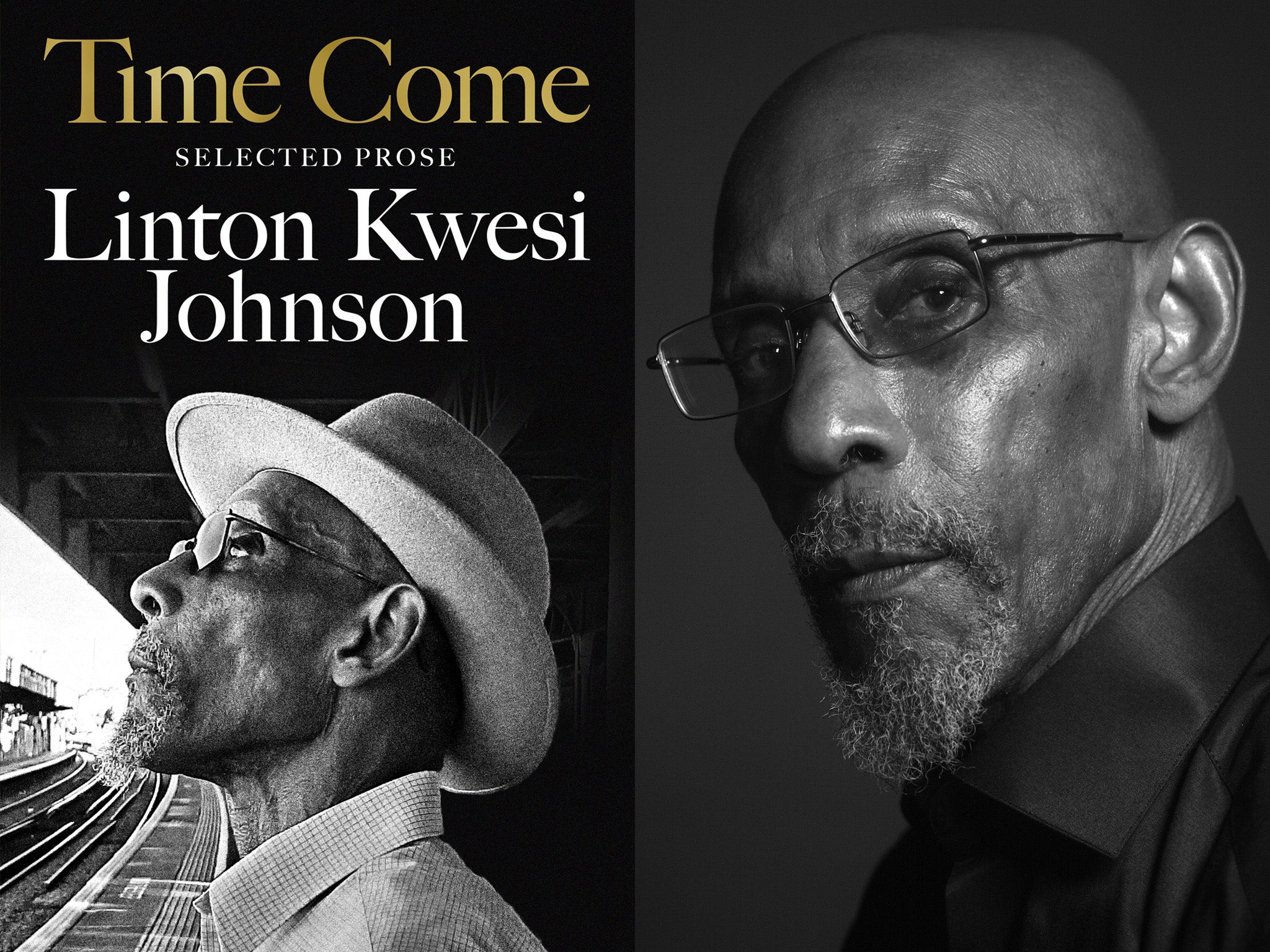
Time Come: Selected Prose by Linton Kwesi Johnson ★★★☆☆
Linton Kwesi Johnson, who was born in Jamaica in 1952 and moved to London at the age of 11, is widely regarded as the father of “dub poetry”, a term he coined to describe the way a number of reggae DJs blend music and verse. Johnson, the winner of the 2020 PEN Pinter Prize, is also an accomplished essayist, and it is good to see his own selections of his best prose, including book and record reviews, lectures, obituaries and speeches, brought together in this 300-page collection.
Time Come: Selected Prose contains several stimulating essays about reggae in the 1970s, some focusing on Bob Marley, and generous tributes to his fellow “dub poets”, including Oku Onuora. The author is interesting about his London life – he thinks of himself as a “Brixtonian” having lived in that London area for more than three decades – and he is uniquely placed to offer his thoughts on the place of music in Caribbean and Black culture.
The book is also a reminder of the ways Johnson stood against oppression. Among the most potent essays is his 2013 blog for LKJ Records, “Thatcher and the Inner City Riots”. The article, written after David Cameron had eulogised the late prime minister for “saving Britain from ruin”, offers a rather more damning view, of a woman who was responsible for racial oppression and marginalisation. “To my mind,” writes Johnson, “Thatcher was a ruthless class warrior for the ruling class. Her ignominious achievement was the tearing up of the post-Second World War ‘settlement’, clawing back the gains the working class had won.” An angry LKJ is an eloquent LKJ.
Time Come: Selected Prose by Linton Kwesi Johnson is published by Picador on 13 April, £20
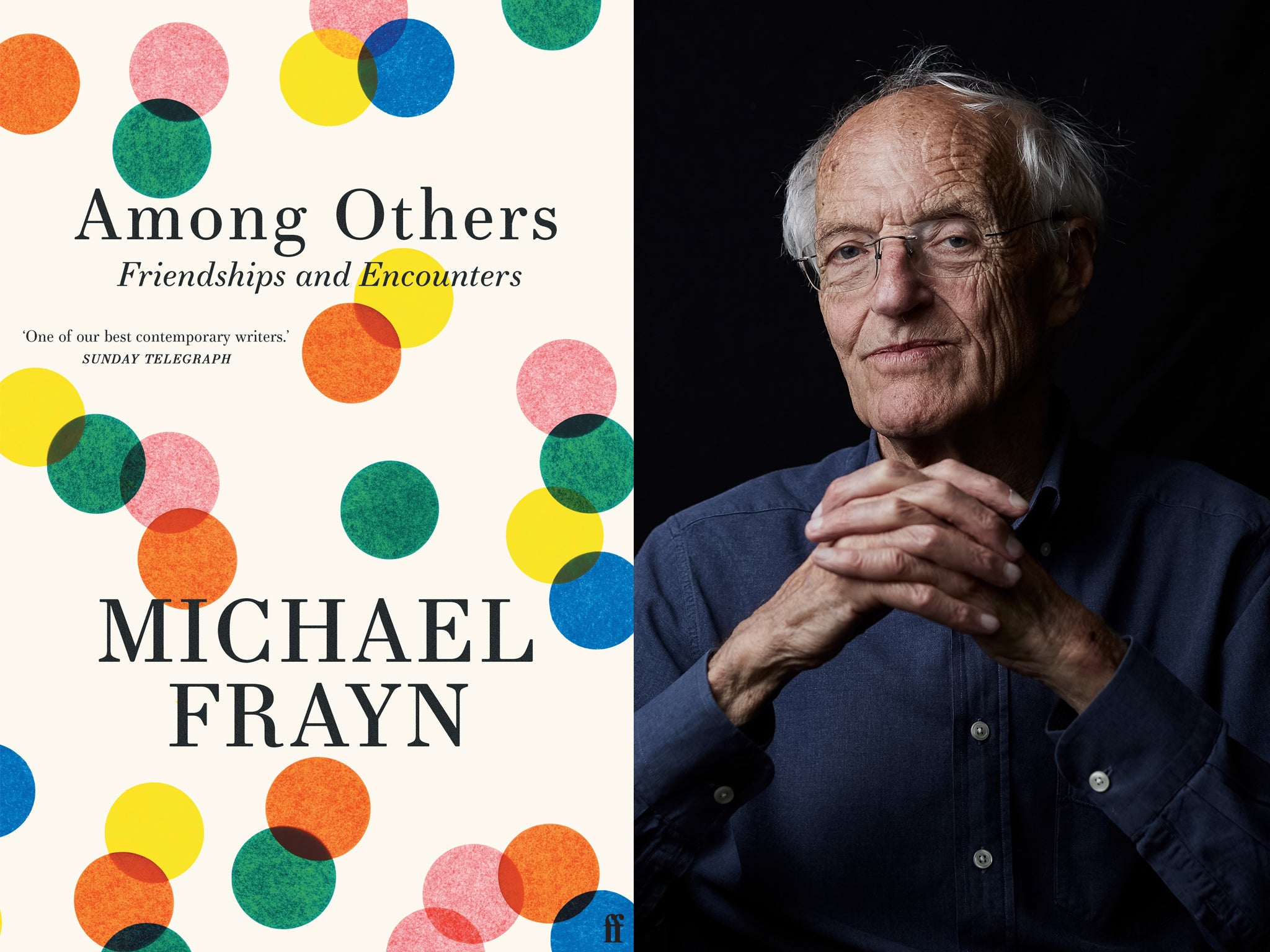
Among Others: Friendships and Encounters by Michael Frayn ★★★★☆
Television host and writer Bamber Gascoigne was among a set of Eton students that grammar school boy Michael Frayn befriended when he went to Cambridge University. “One of the qualities they shared, I realise now I think about them as a group – and a curious one, seeing how many of the old Etonians who are nowadays prominent in political and business life seem to be charlatans, thieves and liars – is that they were all genuinely, deeply good people,” he writes.
Frayn, author of splendid novels and the perennial theatre favourite Noises Off, will be 90 in September this year. In Among Others: Friendships and Encounters, he delivers a poignant memoir about his lifetime’s friendships. His portrait of Gascoigne is typically warm, delicate and funny. He also deals with friendships that suddenly “go wrong”, with distant figures from his past – including future foreign secretary Douglas Hurd (a man he recalls being known as “Hitler Hurd” for his fagmaster love of caning duties) – and with the difficulties of capturing the essence of complicated, troubled real-life friendships in his fictional depictions of them.
One particularly moving account is of a young friend who later kills himself, traumatised to the end by the memories of his tyrant father. It is no wonder Frayn reflects on the “unfathomable country of the past”.
The book (costly at £25) deals with the craft of writing and journalism, and concludes with Frayn’s reflections on his own failing health and his lifelong relationship to his own body. He offers up a handy tip for any olds. “A surgeon told a friend of mine that rule number one for healthy living in old age is: always hold on the handrail when you are going downstairs.”
Among Others is a gentle, wry pleasure.
Among Others: Friendships and Encounters by Michael Frayn is published by Faber on 13 April, £25
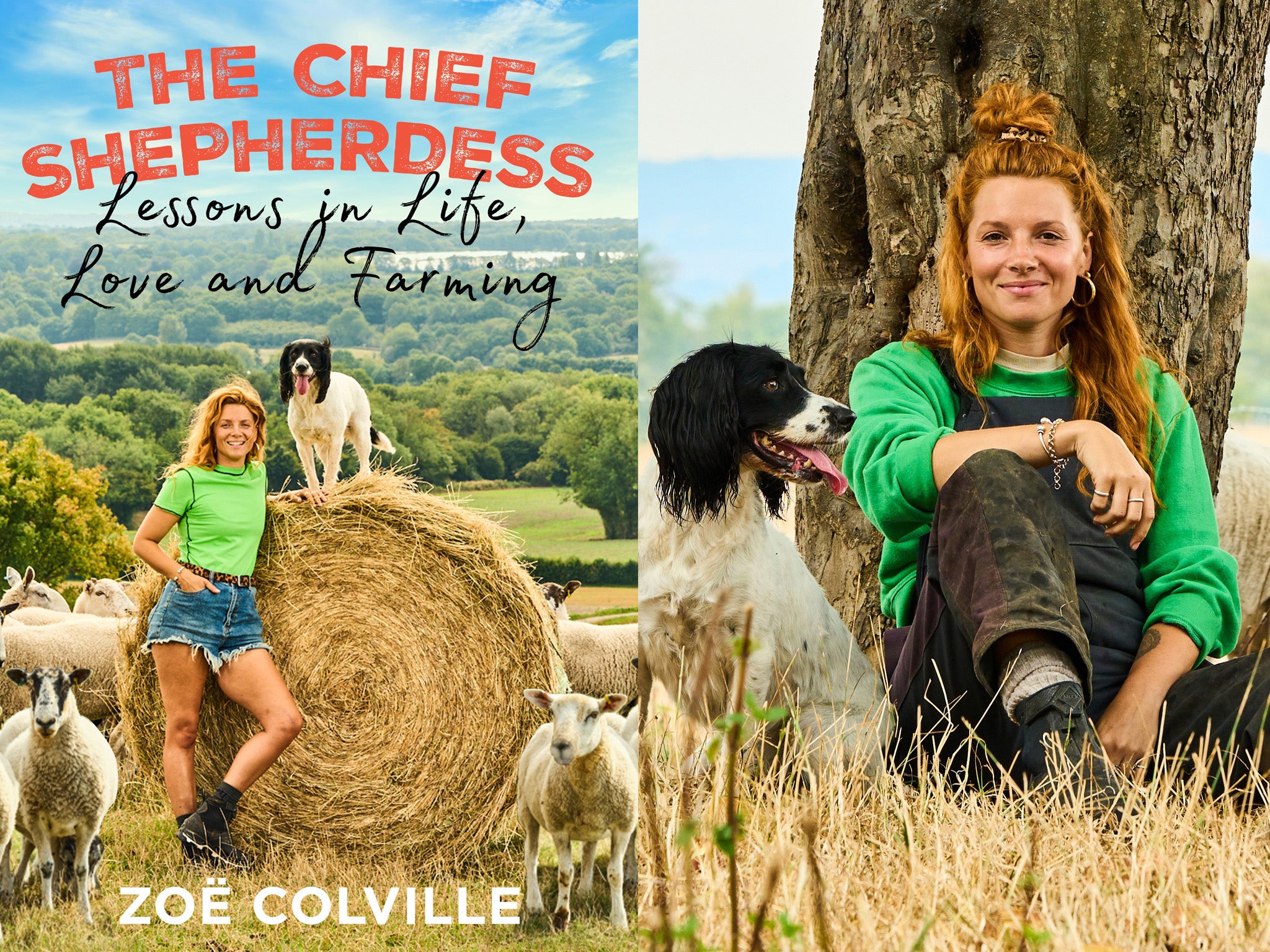
The Chief Shepherdess: Lessons in Life, Love and Farming by Zoë Colville ★★★★☆
Market days for Zoë Colville sometimes require asking “how big are his bollocks?” when she’s hunting for the right ram or tup. “Suffice to say I’ve grabbed more tits and nuts in my short farming career than your average GP,” she jokes, in her humorous, gritty and enlightening memoir The Chief Shepherdess: Lessons in Life, Love and Farming.
Colville, who now has a popular Instagram account called @TheChiefShepherdess, has been on quite a journey since she quit her job as a hairdresser in an upmarket Soho salon. As well as dealing with major family traumas, and her own heartaches and mental health problems – described with candour and wit – she puts across in style just why she finds comfort in hard work and lambing. And farming is a risky business: financially and for one’s health. She recalls how the doctors looked at her like she was “the weird sheep girl” when she asked for help with a case of “scabby mouth” (human).
Colville also has encouraging things to report about the rise in ethical farming and the battle for sexual equality in a sometimes outmoded profession. Any city child will learn a lot from the book. For example, Colville describes how sheep get “surprisingly clued-up” when they want their own way; and that one reason not to leave gates open in country areas is that “teenage pregnancies for heifers” are often the result.
She also notes the difference between “scraggy and mange-ridden” foxes of North London and the healthy ones roaming the Kent countryside. “They are the most stunning copper colour (an 8.43 L’Oréal colour swatch, hairdresser Zoë can’t help thinking). The morning sun reflects off those coats with a gloss I could only ever dream of getting on my old clients,” she writes. When she discovers that their healthy coats are the result of a diet of new-born lamb, she admits she soon changes her philosophy from one of “it’s the circle-of-life” to “let’s get the shotgun”.
And, yes, Colville does answer the question that came straight to my mind: what is a former hairdresser like at sheep shearing? “I’m absolutely terrible at it,” she admits.
The Chief Shepherdess: Lessons in Life, Love and Farming by Zoë Colville is published by Bantam on 14 April, £16.99





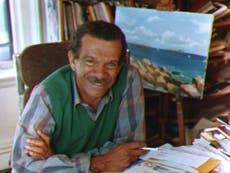
Join our commenting forum
Join thought-provoking conversations, follow other Independent readers and see their replies
Comments